Subscribe and you will promptly receive new published articles from the blog by mail
From a Garage to the World’s Most Valuable Company
Morning. Seattle. Amazon’s new intake is lining up to be initiated – the latest to swell the ranks of the e-commerce giant. They’re being reminded to forget – once and for all – the bad habits they acquired in previous jobs. A firm emphasis is being placed on the leadership philosophy they should from now on adopt and put into daily practice. “If you hit the wall, get over it” – this is the only way to become the best; to be an Amazonian. And only the best work here.
As a company, Amazon is today so huge and omnipresent that it’s not surprising many wonder how to emulate it – how to create a website like Amazon. Very few know, however, that the company began its story in a humble garage. Together with his first employees, Jeff Bezos packed books on desks built of old doors, and personally schlepped parcels to the post office in his ’87 Chevrolet Blazer. In a 2016 interview with Charles Rose, Bezos said he “thought maybe one day we would be able to afford a forklift” – adding, with a little understatement, “it’s very different today.”
It took 25 years for Amazon to grow – from a list of a few books to a vast itinerary of more than 350 million different products delivered globally. With a market capitalization in 2019 reaching $797 billion, it left Microsoft behind to become the world’s most valuable company for the third time.
The story of Amazon is rich with inspiring details. Here we will trace its development, watching as the company evolves from an online bookstore to an international behemoth capable of devouring every industry and market niche in its path.
The Birth of Amazon
In 1994 the Internet was a brand new reality. On Wall Street, Jeff Bezos was already building a successful career. A Princeton University graduate, the 30-year-old manager was responsible for online business, a freshly emerging industry in the America of the early 90s. Others had already observed that his hunger for fresh ideas verged on obsession and that he seemed bound to uncover the scope of the online business opportunities now appearing.
Bezos had realized that the Internet would completely change human habits and that by ’94, though it was early days, the process was already underway. He knew that he must be part of the change.
In a speech given to Princeton alumni in 2010, he spoke of what had been a personal turning point: “I came across the fact that Web usage was growing at 2,300 percent per year. I’d never seen or heard of anything that grew that fast, and the idea of building an online bookstore with millions of titles – something that simply couldn’t exist in the physical world – was very exciting to me.”
So it was that Jeff Bezos quit his well-paid job in New York and invested all he had – plus some of his parents’ savings – in the development of a new type of bookstore.
Why a bookstore? Well, like other decisions Bezos would make as he guided Amazon to success, this one wasn’t based on guesswork or personal taste. Instead, Bezos analyzed goods across a range of categories, looking for those which combined low price with high demand. Books, it turned out, were where the lines crossed.

Amazon.com – Whirlpools on Route to the World’s Biggest River
Initially, Jeff Bezos gave his new platform the magical-sounding name Cadabra – from Abracadabra. But his friend Todd Tarbert, Amazon’s first lawyer, convinced him to rethink, because the word sounded very similar to ‘cadaver’ (especially during phone conversations) – not the most attractive association for new customers to the business. Though Bezos was attached to the original name, the businessman in him understood the importance of branding, and he began the search for a new name.
His next idea was ‘relentless’- but Bezos’ friends insisted that it sounded too sinister. Even so, the domain name relentless.com still belongs to the businessman and redirects users to amazon.com.
Finally, true inspiration struck. Flicking through the pages of the Oxford Dictionary in his search for fresh ideas, Bezos ran into the word ‘Amazon’ – the name of the world’s largest river. Knowing that success would produce copycats and rivals, he decided that this would be his Talisman – a word that embodied the scale that his company must achieve in order to ensure its survival.
The fact that the word began with the letter ‘a’ also made it an ideal search term – because, back then, Internet users were searching for sites like Amazon using alphabetically organized online catalogs.
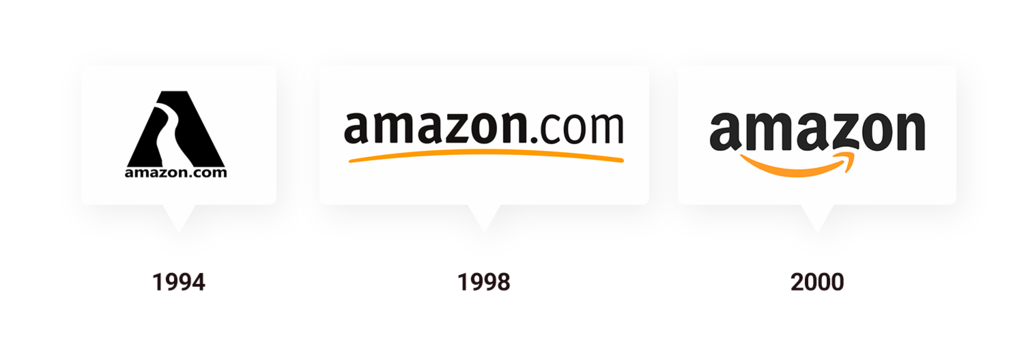
The stars have fallen into alignment, in 1994 Amazon.com was registered, and by 1995 it was online. Success was almost immediate, with the website’s listing on the “What’s New” section of Yahoo.com playing a crucial role in its quick takeoff. What this meant in practical terms was lightning-quick growth in purchase orders. Soon, the company had moved from shipping a dozen or so books a day to turning over $20,000 a week.
Realizing the unprecedented nature of his enterprise, Jeff Bezos set his sights on his company becoming “the world’s biggest bookstore” – a phrase that would remain his mantra for years to come.
A Working Philosophy
Understanding how to build an e-commerce website like Amazon requires adopting the right philosophy to create a successful business. For Jeff Bezos, this meant making an early embrace of data management. When he wanted his grandmother to quit smoking, instead of pleading or trying to guilt-trip her, he made a calculation of the cost of each puff in minutes of life. The result was damning: “you’ve lost 9 years”, Bezos told her – prompting the poor woman to break down in tears. He was ten years old at the time.
When he built his technology and retail giant years later, he took the same uncompromising approach to cultivating what he saw as correct behavior among the people working for him – making use, to this end, of metrics he had developed during his time at D.E. Shaw & Co., his former employer on Wall Street and a firm which had shaken the world through its use of algorithms to maximize the value of its deals.
Despite Amazon’s interest in acquiring the best professionals available, the company took a robust approach to increase demands for lavish remuneration and benefits packages – in contrast to other leading firms in Silicon Valley. Bezos’ focus on growth was matched by a steely focus on discipline – which meant guarding against both mediocrity and financial extravagance.
The eventual result would be a set of leadership principles that all Amazonians had to adopt. Where other companies trumpet vague platitudes about their philosophy, Amazon has clear rules – determining hires, quoted at meetings, and even recited, mantra-like, during lunch breaks. Unnerving as it might sound to outsiders, this near-obsessional approach was key to helping the company secure its unbreachable dominance in e-commerce, guarding against the rise of Amazon alternatives.
Understanding Jeff Bezos’ Infectious Leadership
By the height of the dot-com era, the majority of public companies had become obsessed with achieving shareholders’ short-term objectives. This meant endlessly increasing shares’ efficiency at raising profits, rather than focusing on long-term investment and increasing company value. But Jeff Bezos did exactly the opposite: he sacrificed short-term profitability in favor of a long-term perspective.
Some trade analysts called this approach a ‘gateway to bankruptcy’ – but within a year of the dot-com crash, which produced a huge casualty list of young tech firms, Amazon had not only recovered but announced its first profitable quarter. Though the events of 2001 shook confidence in the future of online retail, Bezos seemed absolutely certain of the viability of multi-vendor marketplaces like Amazon.
Do What’s Best for the Client
Every high-tech business can use a little traditional common sense – and for his part, Jeff Bezos believes that serving customers should be central to the Amazon.com mission. Every Amazon employee, from the CEO down, has to work for at least two days a year in Customer Service – a policy that keeps the company’s upper echelons sharply in touch with customer needs.
Bezos himself often responds to customer emails. Once, one came from an elderly woman who said that though she loved ordering books online, she often found it difficult to open the packages when they arrived – and had to wait until her nephew came by to visit her before she could get stuck into her new reading material. Bezos immediately issued instructions for Amazon’s packaging to be redesigned.
In his interview with Charlie Rose, Bezos said that “the thing that connects everything that Amazon does is the number one – our number one conviction and idea and philosophy and principle which is customer obsession, as opposed to competitor obsession. And so we are always focused on the customer, working backward from the customer’s needs, developing new skills internally so that we can satisfy what we perceive to be future customer needs”.
So, if you’re wondering how to make a website like Amazon marketplace, the advice is clear: sometimes, to beat the competition you need to forget about them and focus on your customers instead.
A Short History of Amazon’s Incredible Evolution
We’ve already sketched out Amazon’s core principles of operation and its philosophy of work – but there’s part of the story of business success that can only be told in numbers. The best thing about online businesses is that they always leave ‘footprints’, letting us go back in time and retrace their steps. So let’s take a chronological look at the key events in the Amazon story…
July 5, 1994 – Amazon is born
With his wife MacKenzie, Jeff Bezos moves to Seattle and opens an online bookstore from a garage. $10,000 in startup costs come out of the couple’s personal savings.
May 15, 1997 – the company goes public
Share price: $1.96
Amazon’s IPO values the company at $438 million. In his report to shareholders, Bezos predicts substantial operating losses due to significant investment in technology and marketing. This is all part of his plan to offer a better customer experience than his giant competitor, Barnes & Noble.
June 11, 1998 – Amazon starts selling CDs and DVDs
Share price: $10.42
The company adds music to its store, offering customers 125,000 products. It also begins offering sample previews and music recommendations filtered by style.
September 28, 1999 – patents ‘1-Click’ technology
Share price: $65.88
Amazon is the first to implement 1-click purchase functionality, something which will be widely used in e-commerce websites like Amazon’s. Early adoption of this technology gives the company several advantages, and in October 1999 Amazon sues Barnes & Noble for infringing on its intellectual property, forcing other websites to license 1-click purchase from Amazon.
September 30, 1999 – marketplace building grows Amazon’s business
Share price: $79.94
Allowing third-party sellers onto its website provides Amazon with a fast track to transaction growth. In the first four months over a quarter million customers make purchases via Amazon Marketplace.
December 10, 1999 – responds to the dot-com crash
Share price: $106.69
As the bubble bursts, Amazon survives, but it suffers significant losses. Having reached heady heights, Amazon’s stock tumbles, forcing the company to lay off 15% of staff.
November 7, 2002 – Amazon starts selling clothes
Share price: $19.12
Amazon continues to expand its offer in partnership with major clothing companies, allowing the company to add over 400 brands to its product range.
June 10, 2003 – cloud hosting signals a new stage of development
Share price: $34.07
Providing web hosting services to other e-commerce websites allows the company to open up a new market niche, which, by 2006, will become Amazon Web Services. (Sixteen years later, AWS is the leading solution in the cloud storage market and a leading source of income for Amazon.)
February 2, 2005 – Amazon Prime rolls out
Share price: $41.88
Bezos launches a new loyalty program, offering unlimited two-day delivery for an annual fee of $79. (Today Amazon Prime is among the company’s most valuable assets, with 100 million subscribers worldwide).
November 19, 2007 – Amazon launches Kindle
Share price: $79.18
Already the world’s biggest bookstore, Amazon now launches a device that changes how people interact with books, magazines, and newspapers. Amazon’s sales increase by 38% and profit doubles.
Introduced during the Christmas shopping season, Amazon’s Kindle sells out in just five-and-a-half hours.
July 22, 2009 – Zappos footwear web store joins Amazon
Share price: $88.79
Bezos’ modus operandi is simple and straightforward: if you can’t win a competition, buy the competitor. After several failed attempts to get ahead of Zappos.com, Amazon purchases it for $1.2 billion. The deal includes the condition that Zappos will continue to operate as an independent entity.
March 19, 2012 – Setting its sights on robotics, Amazon purchases Kiva Systems
Share price: $185.52
Kiva Systems, a warehouse robot producer from Massachusetts, costs Amazon $775 million – but lets the company greatly improve its warehouse automation. Kiva Systems’ involvement with other clients is gradually reduced, its activities instead focused on Amazon’s needs. Technology sharing with competitors is thus reduced, and in August 2015 Kiva Systems is renamed Amazon Robotics LLC.
August 25, 2014 – Acquires Twitch
Share price: $466.37
The addition of video gaming content producer Twitch to the Amazon stable helps the company reach out to the global gaming community and bring it aboard its own cloud platform. The deal is worth $970 million.
June 16, 2017 – Acquires Whole Foods
Share price: $987.71
Growing tired of competition in the grocery delivery market, Amazon snaps up Whole Foods as it has done with Zappos.com before it. The price for all 471 Whole Foods locations is $13.7 billion.
September 4, 2018 – Hitting $1 trillion market capitalization, Amazon becomes the world’s #2 company
Share price: $2,039.51
Investors’ optimistic expectations for profit growth lead to a rapid increase in the company’s stock price. Amazon’s market capitalization briefly reaches $1 trillion. (Earlier in the year, Apple had become the first company to reach this milestone)
January 7, 2019 – Amazon becomes the world’s most valuable company for the third time in its history
Share price: $1,629.51
The new year begins with good news: stock value has increased by 3.4%, pushing market capitalization to $797 billion. Amazon surges ahead of Microsoft, Alphabet (the parent company of Google and its subsidiaries) and Apple to become the world’s most valuable company for the third time.
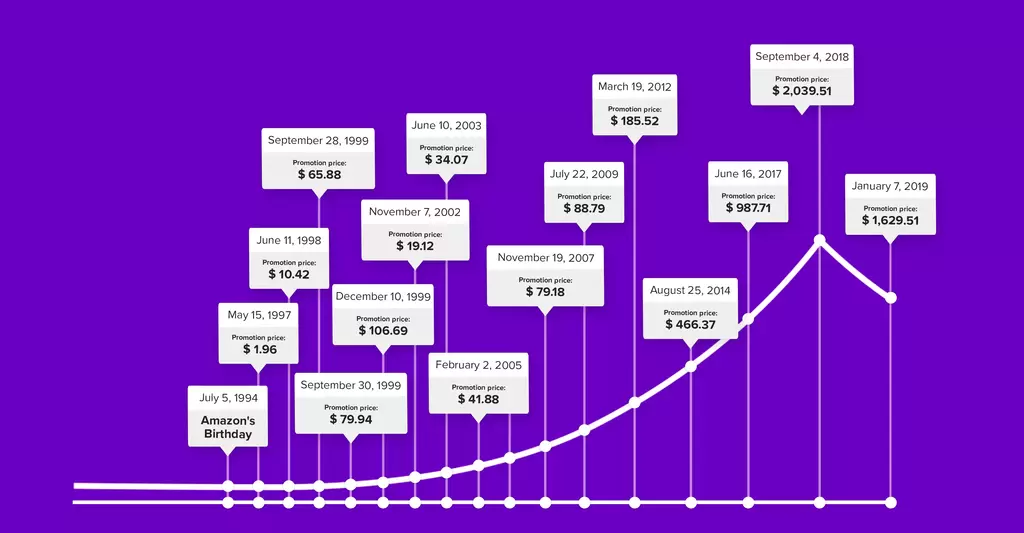
Through all these years of development, strategic thinking and the ability to take calculated risks has allowed Jeff Bezos to do things others can only dream of. Amazon’s story shows that success is not a matter of good fortune and lucky coincidence: it derives from consistently making decisions and taking action – that while often tough and sometimes even ruthless, these ultimately set the company apart from the competition and make it a huge success with customers globally.
“If you decide that you’re going to do only the things you know are going to work, you’re going to leave a lot of opportunity on the table”.
The company continues to invest in innovation – from trucks with onboard 3D printers that create components for clients en route to them, to delivery drones and robotic warehouses. And doubtless, there is much more to come.
Last Minute Fun Facts
- Cost reduction is a guiding principle for Amazon. In the beginning, the company’s staff, including Bezos himself, worked behind desks made of old doors. Today Amazon gives a Door Desk Award to employees who come up with ideas that help the company save significant amounts of money and lower prices for customers.
- A weird book about lichen saved Amazon from bankruptcy. Book distributors required orders of at least 10 books at once – a quantity Amazon couldn’t afford and didn’t need in its early days. The solution was to order the one book that was really needed, plus nine copies of an obscure title about lichen that was always out of stock.
- Jeff Bezos was the first to implement a feedback system in his online store. It was a risky move, with his friends and colleagues warning him that negative feedback could scare away prospective customers. But the risk paid off handsomely, with sales skyrocketing thanks to positive reviews.
- At the very beginning, Jeff Bezos had set himself two benchmarks of progress:
- if by 2000 the company’s annual sales had reached $74 million, that would be an acceptable result;
- if by that year sales were more than $144 million, he would consider it a success.
In fact, sales reached $1.6 billion, making Bezos one of the major e-commerce market players.
If you’d like to build a website like Amazon and want to know how much the project will cost, you only need to speak to one of the professionals at Roobykon Software – we’ve been helping our clients find their place in the e-commerce market for the last eight years. Combining our expertise and your business objectives, we can offer you the best readymade marketplace builder solutions, or build you a marketplace from scratch to your exact requirements.
Roobykon Software: where great ideas meet flawless implementation. Get in touch!
Recommended articles
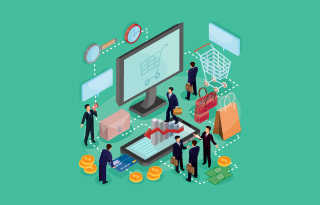 20 Ways to Attract Buyers and Sellers on the Marketplace
20 Ways to Attract Buyers and Sellers on the MarketplaceAre you aiming to grow your marketplace? This article reveals 20 effective strategies to help you attract a steady stream of buyers and sellers, from marketing techniques to platform enhancements.
 AI Integration in Marketplaces: Why It’s the Next Big Thing
AI Integration in Marketplaces: Why It’s the Next Big ThingAI is taking the e-commerce industry by storm, with a projected market value of USD 29.71 billion by 2031. As we continue to see the impact of AI across industries, it's no surprise that its integration in online marketplaces is transforming the way businesses operate.
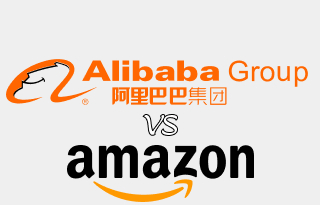 Alibaba vs Amazon: a battle of two e-Commerce giants [Updated]
Alibaba vs Amazon: a battle of two e-Commerce giants [Updated]The Chinese Giant and the American Colossus find themselves at loggerheads, each determined to drive forward its own vision: a ‘pure’ marketplace on one hand; ‘retailer logic’ on the other. This article shows the main differences between Alibaba and Amazon.
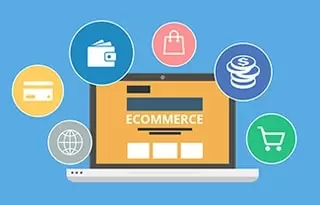 Horizontal E-Commerce vs. Vertical E-Commerce
Horizontal E-Commerce vs. Vertical E-CommerceWith the everliving, 'evertrendy' field of e-Commerce, a keen business entrepreneur must be aware of its nuances and main terms. Horizontal and vertical types of e-Commerce are crucial points of the matter, yet, not everybody can quite understand these aspects properly. Let’s figure it out!






